Sentiment Isn't Yet the Support It Needs To Be
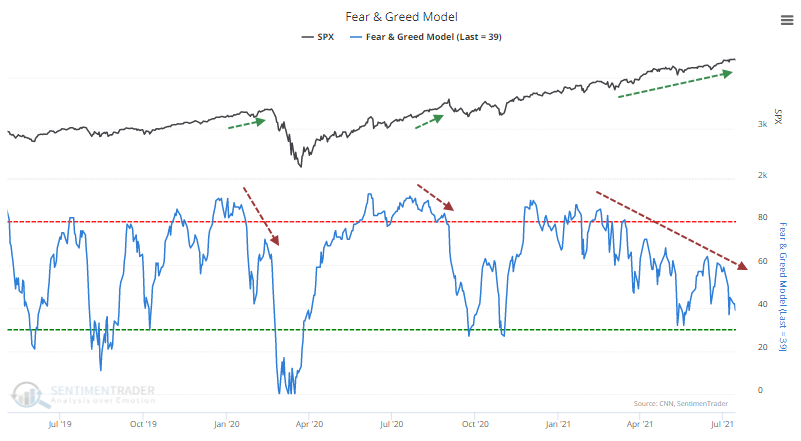
Investors are already fearful, and that has to be a good sign for stocks.
That's the theory being bandied about regarding the CNN Fear & Greed model. The news organization's sentiment measure has been sliding lower for weeks and is nearing a level considered to show fear.
We used their publicly revealed inputs to recreate the model, though to generate more history and hopefully more accuracy, we use different inputs for high-yield bonds and put/call ratios. There is about a 95% correlation between the two versions.
Unlike at market bottoms, sentiment often peaks well ahead of prices. Investors become euphoric, push prices higher, then gradually lose interest. Bull markets need steadily rising optimism to continue rising, so this is an issue.
WHAT IT SUGGESTS FOR FUTURE RETURNS
When we look at the numbers, we can see why declining Greed is not necessarily a good thing. The table below shows every time since 1998 when the S&P 500 had been at a 52-week high within the past week, and Fear & Greed fell below 40.
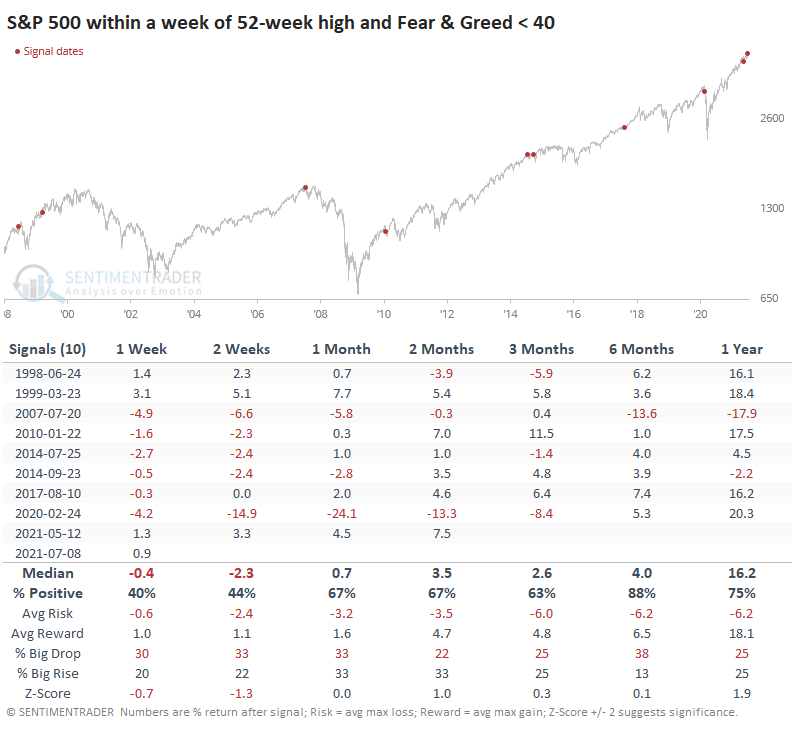
That's not terrible, though short-term returns were weak. How about when the model fell below 40 but the S&P was still within 1% of its high at the time? Here, not so good.
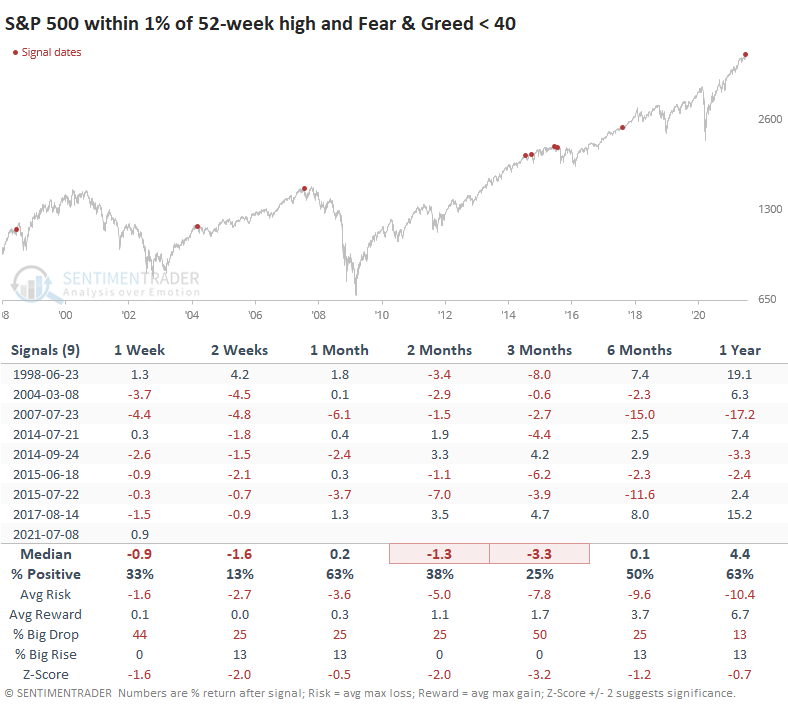
And when both conditions trigger, there were only three precedents, none of them good. The signal from August 2017 only missed triggered by a fraction, though, so that would have been a pretty big exception.
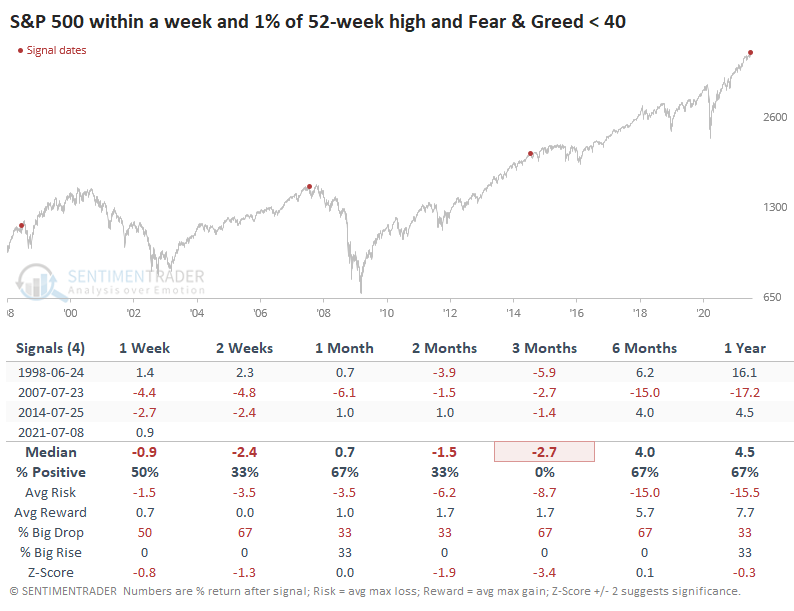
It's been a couple of weeks since this one triggered, and we've seen the expected weakness. If it plays nicely with historical precedent, then there should be more weakness still to come.
FINALLY, DUMB MONEY CONFIDENCE < SMART MONEY
What we saw on Monday was enough to finally push Dumb Money Confidence below Smart Money Confidence for the first time in over a year, so the spread finally turned positive (the chart below has an inverted scale).
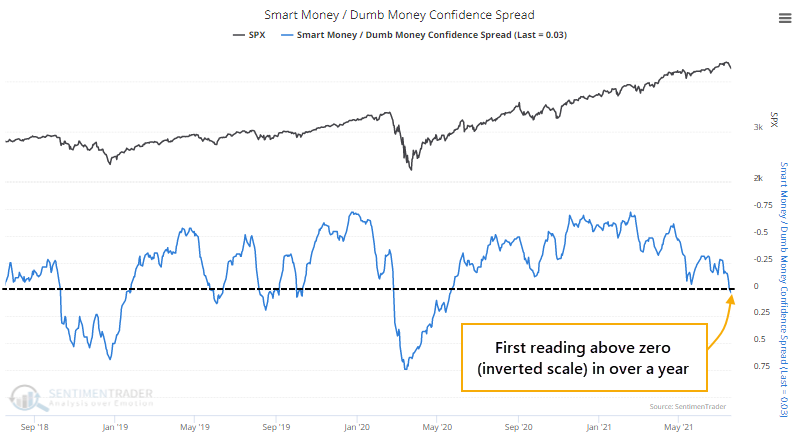
This just ended the longest-ever streak with the opposite condition. No other period went more than a year.
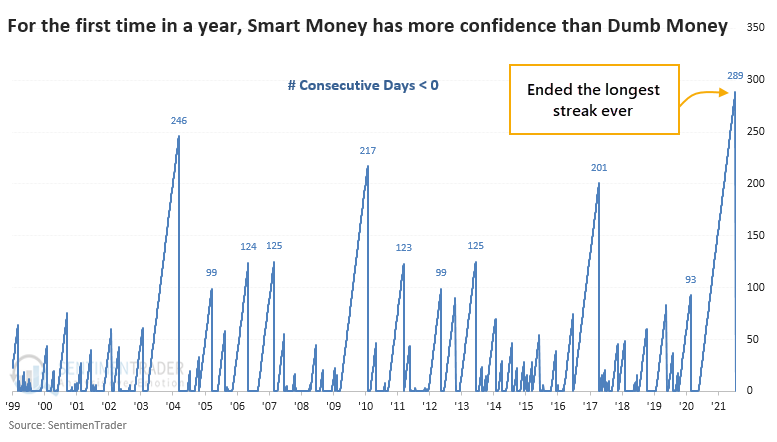
The first time that the Confidence Indexes flipped in more than 90 days, the S&P 500 tended to see continued short-term weakness but showed very strong longer-term returns.
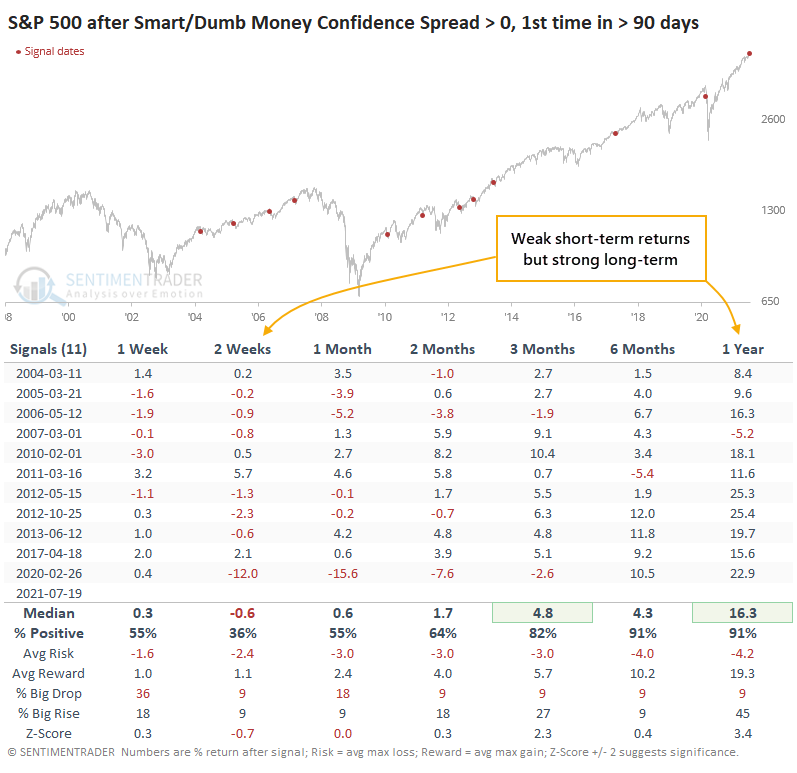
The weakening breadth we've been highlighting has a strong tendency to lead to weak short- to medium-term returns. And the strong momentum in the first half of the year has an even stronger tendency to lead to higher medium- to long-term returns. The flip in Confidence seen above is further support to both arguments.

